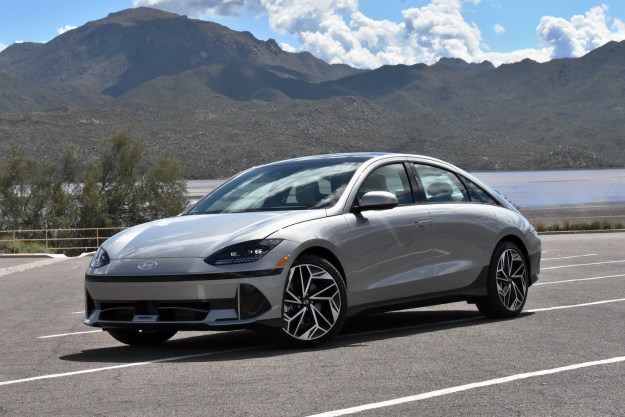A brief teaser film gives us a better idea of what to expect from the i30 N. While the car’s design is hidden by extensive camouflage, we can tell that it adopts a muscular look characterized by a deep front bumper, a model-specific grille accented by a pair of arches, and a roof-mounted spoiler. The i30 N will usher in the styling cues that will trickle down to other N-badged Hyundais in the coming years.
Read more: Hyundai’s Ridgeline-punching pickup takes shape
Earlier rumors suggest that the i30 N will use a 2.0-liter turbo four rated at about 255 horsepower and 228 pound-feet of torque. Official technical details are being kept under wraps for the time being, but a close listen to the i30 N’s exhaust note confirms that it’s equipped with a turbocharger. Front-wheel drive and a six-speed manual transmission will come standard, while a quick-shifting dual-clutch automatic might be added to the lineup a little later in the production run.
The regular Hyundai i30 will be presented to the public later this month during the biennial Paris Auto Show. Speed junkies will need to be patient, because the N-badged model isn’t expected to arrive until next year’s edition of the Geneva Auto Show.
What’s next?
Hyundai is looking into building an even hotter version of the i30 that will fight in the same league as the Volkswagen Golf R and the Ford Focus RS. Power will come from an evolution of the aforementioned turbo four tweaked to deliver well over 300 horsepower. All-wheel drive will keep the power in check. Whether or not the company moves forward with a Golf R-fighting model largely depends on how the regular i30 N is received by the press and the public, Albert Biermann, the head of Hyundai’s N division, revealed in an interview with British magazine Autocar.
Editors' Recommendations
- 2025 Hyundai Tucson Plug-In Hybrid gets improved tech features
- Hyundai bets big on hydrogen from sewage, plastic
- Amazon and Hyundai partner on online car sales, in-car services
- What it means now that Kia and Hyundai have adopted Tesla’s charging standard
- Netflix gears up to increase prices again, report claims




